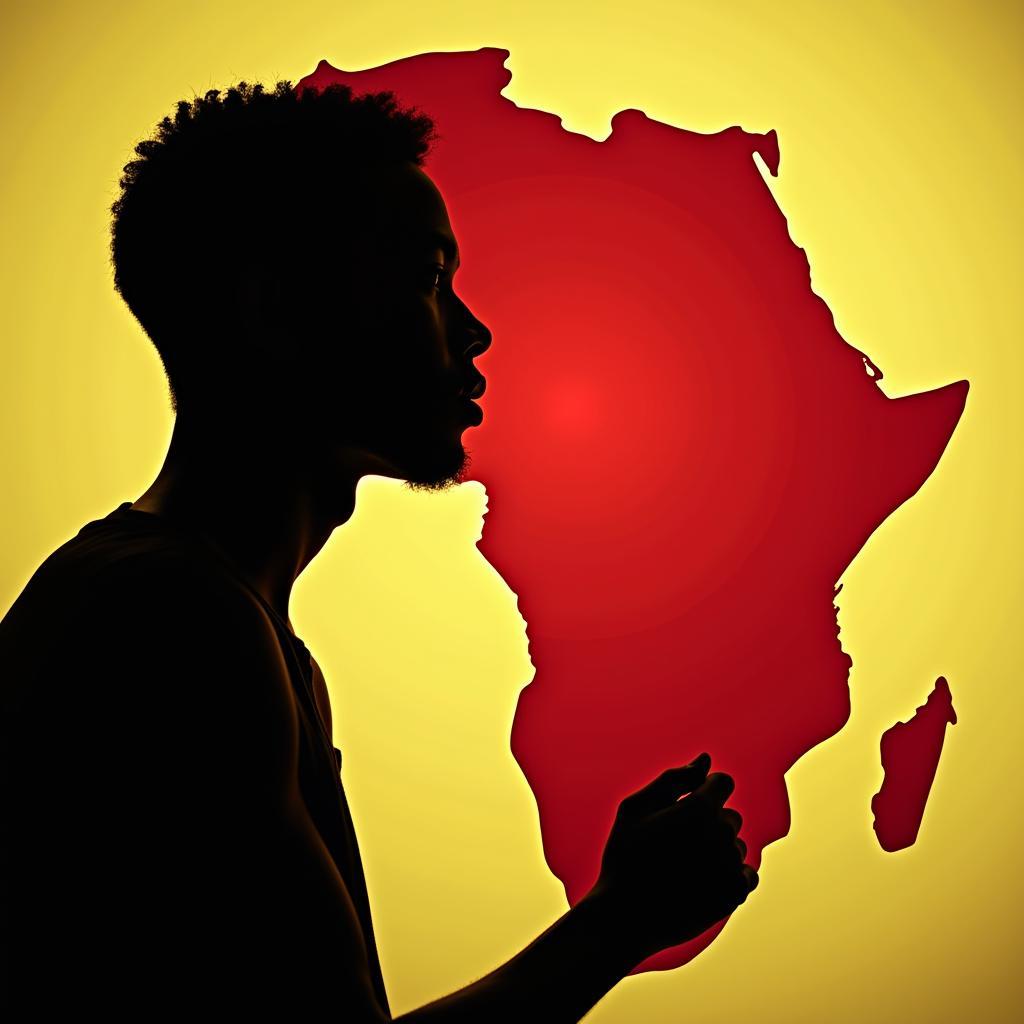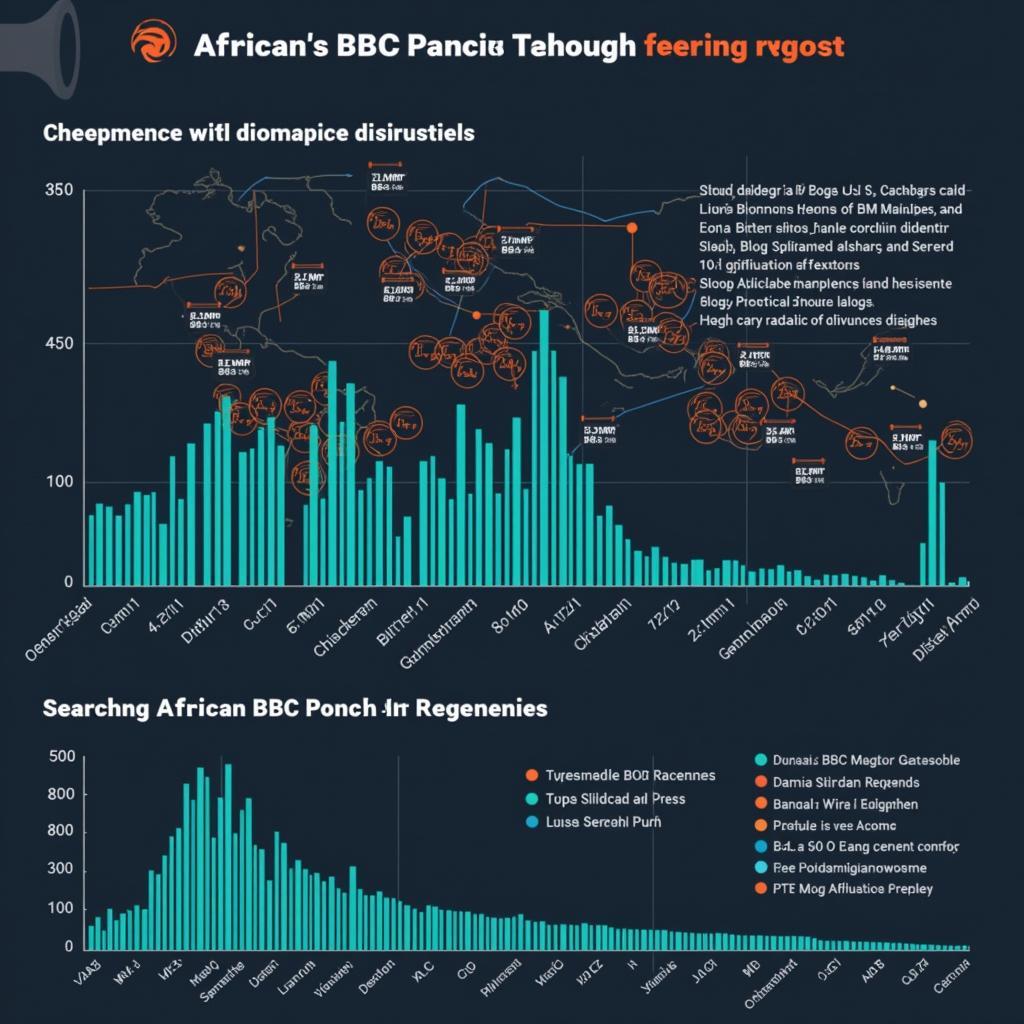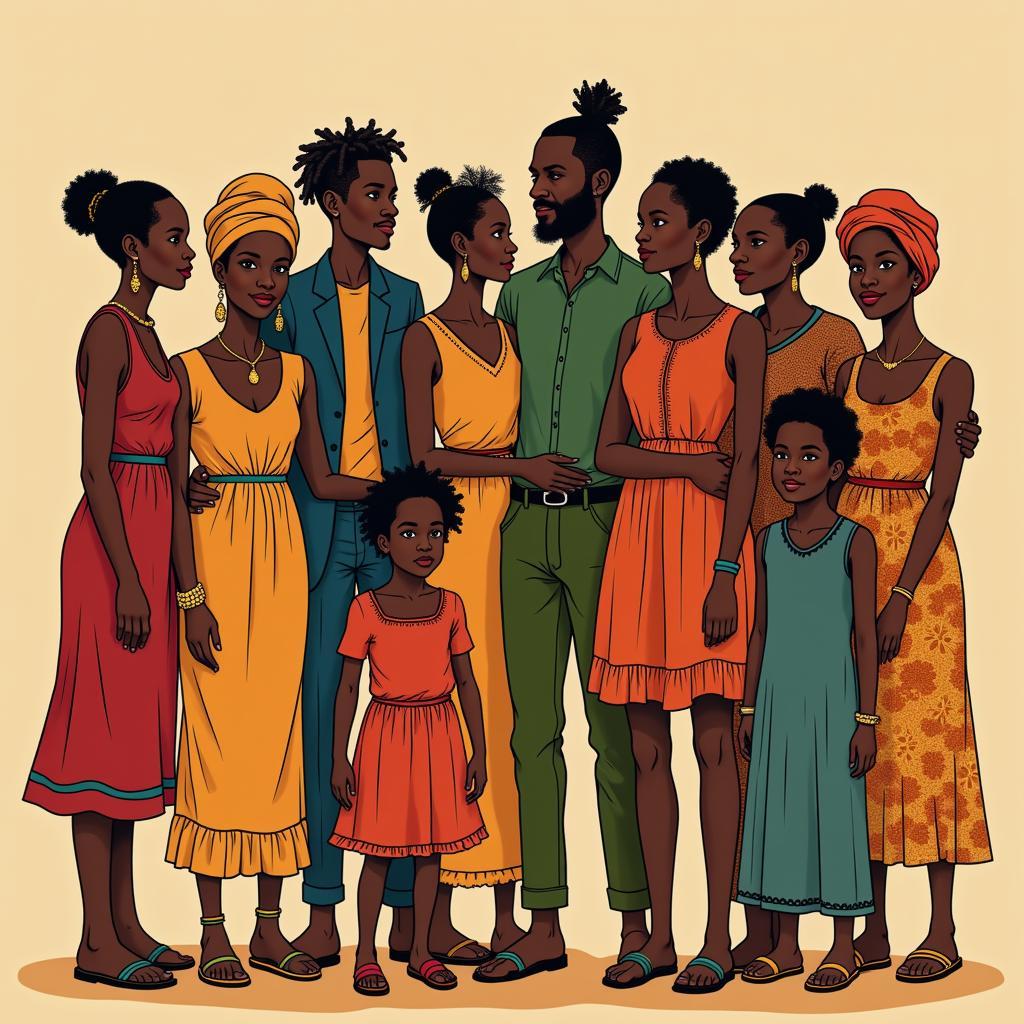Exploring the Vibrant World of African Fabric Designs
African Fabric Designs are more than just cloth; they are vibrant expressions of culture, history, and artistry. From the intricate patterns of kente cloth to the bold graphics of Ankara, these textiles tell stories, represent traditions, and embody the spirit of a diverse continent. This article delves into the rich world of African fabric designs, exploring their history, significance, and modern interpretations.
A Journey Through History: The Origins of African Fabric Designs
The history of African fabric designs is as rich and varied as the continent itself. Ancient techniques like mud cloth dyeing and strip weaving predate recorded history, demonstrating the ingenuity and creativity of early African artisans. Indigo dyeing, a common practice across Africa, created deep blue hues that symbolized power and spirituality. Over time, trade routes introduced new materials and techniques, leading to the evolution of distinct regional styles. For instance, the arrival of silk from the East influenced the development of elaborate woven fabrics in some regions. The use of natural dyes derived from plants, roots, and bark resulted in a unique color palette that reflects the diverse ecosystems of Africa. Check out distributors of African fabric for a wider selection. african fabric distributors
The Symbolism and Meaning Woven into African Textiles
African fabric designs are imbued with deep cultural significance. Each pattern, color, and motif often carries a specific meaning, telling stories of ancestry, social status, or spiritual beliefs. For example, the Adinkra symbols of Ghana convey proverbial wisdom and philosophical concepts. Kente cloth, with its intricate geometric patterns and vibrant colors, traditionally represents royalty and prestige among the Ashanti people. The use of specific colors can also hold symbolic meaning, with red often representing power or life force and gold signifying wealth and prosperity.
From Traditional to Modern: African Fabric Designs in Contemporary Fashion
Today, African fabric designs are experiencing a global renaissance, influencing fashion, interior design, and art around the world. Contemporary designers are incorporating traditional techniques and motifs into modern creations, breathing new life into ancient art forms. From high-fashion runways to everyday streetwear, African prints are making a bold statement. The versatility of these fabrics allows them to be used in a variety of garments, from elegant evening gowns to casual shirts and accessories. This resurgence of interest is not only celebrating the beauty of African textiles but also empowering local artisans and communities. You can find wholesale African handicrafts for unique and stylish pieces. african handicrafts wholesale
What are some common motifs in African fabric designs?
Common motifs in African fabric designs include geometric shapes, animal prints, and depictions of nature. These motifs often carry symbolic meanings related to ancestry, spirituality, and everyday life.
How are African fabrics traditionally made?
Traditionally, African fabrics are made using various techniques, including weaving, dyeing, and printing. Many fabrics are handwoven on looms, while others are dyed using natural ingredients like indigo or mud.
How can I incorporate African fabric designs into my wardrobe?
You can incorporate African fabric designs into your wardrobe by choosing clothing and accessories made from African prints. Start with small pieces like scarves or headwraps before experimenting with bolder garments like dresses or jackets. Look for beautiful African head wraps and accessories to complement your style. african head wraps and accessories
The Future of African Fabric Designs: Preserving Heritage and Embracing Innovation
The future of African fabric designs lies in balancing the preservation of traditional techniques with the embrace of innovation. As new technologies emerge, designers are exploring ways to incorporate digital printing and other modern methods while still honoring the cultural significance and artistry of these textiles. This fusion of tradition and modernity ensures that African fabric designs continue to evolve and inspire, captivating audiences worldwide. Consider checking out African boy fashion for trending styles. african boy fashion
How can I care for my African fabrics?
Proper care for African fabrics depends on the specific material and dyeing technique. Generally, hand washing or gentle machine washing in cold water is recommended. Avoid harsh detergents and direct sunlight when drying.
“African textiles are more than just beautiful fabrics,” says Abena Serwaah, a renowned textile historian from Ghana. “They are living narratives that connect us to the past and inspire the future.”
“By understanding the stories behind these designs, we can appreciate the rich cultural heritage they represent,” adds Dr. Kwame Asante, a leading expert on African art and symbolism.
In conclusion, African fabric designs offer a captivating glimpse into the heart and soul of a continent. From their historical origins to their modern interpretations, these vibrant textiles continue to tell stories, celebrate traditions, and inspire creativity around the world. Exploring the world of African fabric designs is a journey of discovery, revealing the rich tapestry of culture and artistry that makes Africa so unique.
FAQ
-
What is the most popular African fabric? Ankara, also known as African wax print, is one of the most popular African fabrics.
-
Where can I buy authentic African fabrics? You can buy authentic African fabrics from specialized retailers, online marketplaces, and directly from artisans in Africa.
-
How can I tell if an African fabric is authentic? Authentic African fabrics often have a distinct texture and vibrant colors that are difficult to replicate.
-
Are there specific occasions when certain African fabrics are worn? Yes, some African fabrics are reserved for special occasions like weddings, festivals, and funerals.
-
What is the significance of the Adinkra symbols? Adinkra symbols are visual representations of proverbs and philosophical concepts from the Akan people of Ghana.
-
Can I use African fabrics for home decor? Absolutely! African fabrics can add a vibrant and unique touch to your home decor, such as cushions, curtains, and wall hangings. The striking patterns and colors can transform any space. Consider African cigarettes dress styles for some inspiration. african cigarettes dress
-
How can I learn more about African fabric designs? Numerous resources, including books, museums, and online platforms, offer in-depth information about African fabric designs and their cultural significance.
Need assistance? Contact us at Phone: +255768904061, Email: kaka.mag@gmail.com or visit us at Mbarali DC Mawindi, Kangaga, Tanzania. Our customer service team is available 24/7.



